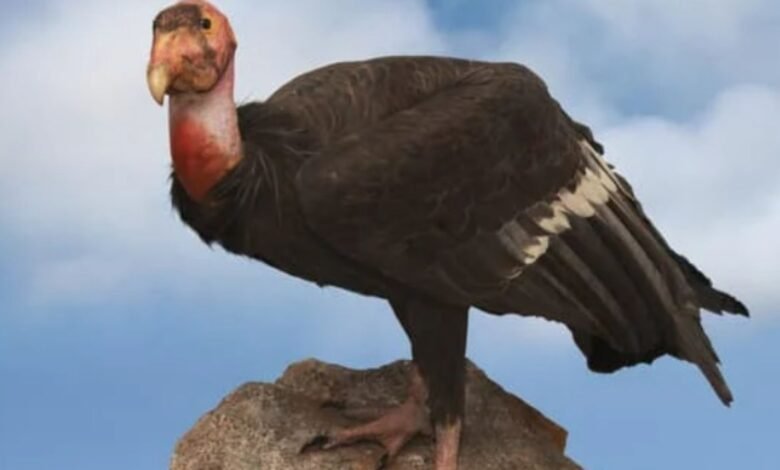Zoo Breeds Record Number of Condor Chicks for Release
Hope for endangered condors! Zoo successfully hatches record-breaking number of chicks.

LA Zoo breeds record 17 condor chicks for release, boosting conservation efforts for the critically endangered California condor.
Conservationists are thrilled to report that they can now release more California condors into the wild. This is thanks to a record number of chicks hatched at the Los Angeles Zoo this breeding season. This achievement is a big step forward for the conservation of North America’s largest flying bird, the California condor.
Previous record of 15 chicks set in 1997 was surpassed by 17 condor chicks hatched this season at Los Angeles Zoo. In June, final chick of season was born and is thriving. Zoo attributes its success to a novel approach that minimizes the birds’ interactions with people. Zoo has helped more chicks survive and thrive by maintaining more wild lifestyle for the condors.
Rose Legato, Los Angeles Zoo’s curator of birds, clarified that more chicks had been added to the program as a result of this new approach. As a result, number of condors that can eventually be released into wild will rise.
This success shows the hard work and creativity of Los Angeles Zoo and its associates. The chances of condor species surviving on the verge of extinction are better the more chicks that are grown and released. With every fruitful breeding season, there is a new hope for these beautiful birds’ future.
California condors are critically endangered due to years of lead poisoning from scavenging carcasses contaminated by ammunition. Despite this, their numbers are increasing thanks to efforts to release captive-bred birds into the wild. However, condor moms still make better parents than humans, which led to a breakthrough in breeding and rearing techniques by conservationists.
To protect the condor eggs, zoo staff initially place fertilized eggs in incubators. Just before hatching, these eggs are moved to surrogate condor parents. In the wild, a California condor usually raises only one chick at a time. Before 2017, conservationists would place one egg with one bird, and if there were more eggs than surrogate parents, humans would care for the remaining chicks, sometimes using puppets to mimic real birds.
However, chicks raised by real condors are better prepared for life outside the zoo. In 2017, the LA Zoo tried giving a surrogate parent two chicks at once, and this year, they placed three eggs with a single female for the first time. This method also allows breeding pairs to have more than one viable egg each season.
This season, zoo placed six chicks in triple broods & eight chicks in double broods, with another three chicks raised solo. All 17 chicks are now candidates for eventual release into wild.
This initiative is part of the California Condor Recovery Program (CCRP), a collaboration that began in the 1980s among tribes, state and local agencies, nonprofit organizations, and zoos. In 1982, human activity had nearly wiped out the California condor, with only 22 remaining. By December 2023, their numbers had grown to 561, including 344 in the wild.
Jonathan Hall, a wildlife ecologist at Eastern Michigan University, noted that condors are social animals, and understanding their social dynamics has contributed to the success of these chick-rearing techniques.
LA Zoo does not keep California condors on exhibit, but visitors can meet a non-releasable condor named Hope during its bird show. There are also some adorable videos of Hope on YouTube, where she appears to be smiling.
In the wild, California condors are majestic birds with wingspans reaching over nine feet. They can fly up to 150 miles day and reach heights of 15,000 feet. As scavengers they play crucial role in cleaning up carcasses of large mammals including deer, cattle, seals and even whales.
Unfortunately this scavenging behavior leads to lead poisoning which remained leading cause of death for condors through 2022. Conservationists urge hunters and ranchers to use non-lead ammunition such as copper bullets to protect birds. Additionally, cleaning up small pieces of trash like bottle caps, can tops and glass shards helps prevent birds from ingesting harmful materials.
Every step can make a difference. The first chick hatched in the wild since the collaborative conservation effort started was documented in 2004. By 2008, there were more condors soaring in the open skies than those living in zoos.
- The Magnetic Force That Shapes Our Galaxy
- Magnetic Field of Earth – Earth’s Magnetism
- Casimir Effect
Conclusion: Zoo Breeds Record Number of Condor Chicks for Release
Condor moms are excellent parents and new breeding and rearing techniques developed by conservationists are helping increase population of California condors. These efforts, combined with the use of non-lead ammunition and reducing trash are crucial for the survival of this incredible bird species.



